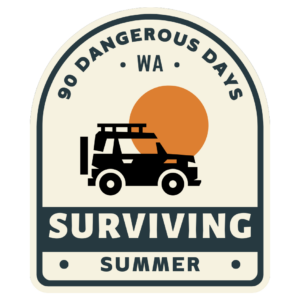Emphasis Patrols
The Washington State Patrol participates in multiple emphasis patrols during the year. Click the logos to learn about our major emphasis patrols.
Traffic
Commissioned Washington State Patrol troopers carry out the agency’s primary goal of providing a safe motoring environment for the public. They are responsible for enforcing traffic laws, investigating collisions, and assisting motorists on 17,524 miles of the state’s highways.
The Field Operation Bureau oversees eight geographic districts. Each district is faced with unique characteristics and challenges. The bureau is responsible for the safety of the motoring public on Interstate Highways and State Routes across Washington.
In 2020, FOB troopers:
- Made 847,286 contacts
- Answered 215,695 calls for service
- Investigated 35,505 collisions
- Arrested 12,582 impaired drivers
If you are pulled over by a Washington State trooper, you can expect a professional and courteous interaction. The agency’s goal is to make everyone on the roadways feel safe. If you’ve never been stopped by a law enforcement officer before, please watch the video below to become familiar with the process.
What to Do and Expect When Pulled
Over by Law Enforcement

Law Enforcement officers are responsible for conducting traffic stops when they have reasonable suspicion of a traffic violation or a criminal violation. Being stopped by an officer can be a stressful experience for the driver, any passengers, and for the officer, too. Knowing what to do during the stop will help ensure your safety and the safety of others.
When you see emergency lights behind you, it is important for you and your passengers to stay calm and cooperate.
Remember to:
- Activate your turn signal and pull off or to the side of the roadway as soon as it is safe to do so.
- Turn off the engine and any audio devices.
- Stay in your vehicle unless directed by the officer to exit.
- Turn on your interior lights if you are pulled over at night to assist with visibility. Officers may use a spotlight for additional visibility.
- Keep your hands on the steering wheel or in a visible location so they are easily observable.
- Follow all instructions the officer gives you or your passengers.
The officer may approach either side of the vehicle. When the officer approaches the vehicle, remember to:
- Lower the corresponding window so you and the officer can better communicate.
- You can let the officer know if you have a weapon in the vehicle upon first contact.
- Wait for the officer’s instructions before reaching for your driver’s license or vehicle documents.
When conducting the stop, the officer will typically:
- Show their law enforcement credentials if they are not in uniform. If they do not show their credentials, you may ask to see them.
- Explain why you were stopped/ask questions about your trip.
- Ask for your driver’s license, proof of insurance, and vehicle registration. If the documents are out of your reach, tell the officer where they are and wait for the officer’s acknowledgement before reaching to retrieve the documents.
In some cases, the officer may:
- Ask you to exit the vehicle. In this case, keep your hands visible, exit the vehicle, and stand in a location as directed by the officer.
- Impose a sanction such as a warning, traffic ticket which may include a fine, or arrest. The officer will typically explain whatever action is being taken. If they do not, you may ask them to do so.
If you have questions, respectfully ask the officer to clarify. If you disagree with the officer’s decision or course of action, do not prolong the contact by arguing with the officer. Rather, you may seek to contest the decision in court through established legal channels. Your acceptance of a traffic ticket is not an admission of guilt.
If you believe the officer acted inappropriately or have questions regarding their conduct you may request to speak to a supervisor. This is best done as soon as possible after the stop.
Following these procedures can help make a traffic stop a safe experience for all parties involved.
(Revised January 2022)
This guidance was approved by the American Association of Motor Vehicle Administrators, the International Association of Chiefs of Police, the National Organization of Black Law Enforcement Executives and the National Sheriffs’ Association.


Aerial
The Washington State Patrol (WSP) provides statewide aerial enforcement, rapid response, airborne assessments of incidents, and transportation services in support of the Patrol’s public safety mission.
WSP Aviation currently manages six aircraft:
- 1 King Air
- 3 Cessna 182’s
- 2 Cessna 206’s equipped with Forward Looking Infrared (FLIR) cameras
Aerial services provide assistance to troopers, agency staff, and local jurisdictions by providing:
- Statewide day and night aerial traffic enforcement
- Traffic congestion management
- Identification of locations where serious injury or fatality collisions are likely to occur
- Vehicle pursuit management
- Tactical advantage to ground-based troopers providing additional safety
- Support for Emergency Preparedness/Homeland Security
- All-hazards emergency service air operations
- Other law enforcement missions including: Stolen vehicle recoveries, fraud tax and evasion, wildland fire management, natural disaster assistance, spill response, search and rescue, and much more


